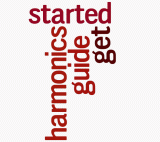Trade with an Edge
Low-Risk Trading
All traders are interested in low-risk trading. And there is only one thing a trader can control. That's Risk.
There are three key things a trader needs to pay attention to.
- Determine a risk-reward ratio, in advance, to figure out if - and where - to enter a trade.
- Keep leverage to single figures - ideally below 1:5.
- Diversify - do not trade correlated pairs at the same time to spread the risk.
Risk-Reward Ratio
If your aim is low-risk trading then you will always need to place a stop-loss.
The big question is how far away should it be from your trade entry price. Too close and you increase the chance of being stopped out. Too far away and you run the risk of a large loss when the market turns against you.
A key principle, which is just common sense really, is that you should always risk less than your potential reward, in order to be profitable in the long run.
This requires that you determine what your risk and your potential reward are before you place a trade.
Risk is the distance between the stop and the entry price. Reward is the distance between the entry price and the B point on the pattern.
The general recommendation is that the Risk/Reward ratio should be at least 1:2. That means risk $1 to make $2 profit.
For more details see Risk Reward Ratio.
Leverage
To calculate your current leverage, divide the sum total value of all your open positions by your trading capital.
Leverage = Sum of Value of all Open Positions/Total Trading Capital
For example, if you have $10,000 in your account, and you open a $100,000 position (which is equivalent to one standard lot), you will be trading with a 10 times leverage on your account (100,000/10,000).
If you trade two mini lots, which is worth $20,000 in value, with $10,000 in your account, then your leverage on the account is 2:1 (or 20,000/10,000).
What is the ideal leverage? Studies have shown the optimal leverage to be 1:4.
Higher than that and you run an increasingly greater risk of suffering large drawdowns and eventual wipeout.
My own rule is that my max ever leverage at any one time is 5:1. So, for example, if I had an account balance of $10,000, then, I keep the sum of all my open positions to a max of $50,000 - that's 5 mini-lots of $10,000 each. Most of the time, my leverage is not more than 3:1.
See Trading Leverage for more details.
Money Manegement
Having a method like harmonics to put the odds in you favour is only part of the equation. Money Management is the other key ingredient. Without precise money management it doesn't matter how good your trading systems is - you are almost bound to fail.
I also recommend the following pages for further details on harmonic patterns.
Harmonics Basics
- A Trading Edge
- Why Harmonics Pattern Success is High
- Trading the Probabilities
- Low-Risk Trading - Risk & Reward
- Leverage
- Trade Entry
- Scaling Into a Trade
- Trade Management
Trading Resources
Money Management
Learn how Adaptive Position Sizing can grow your account balance - exponentially.
Cash rebates on your trades.

Real-time harmonic alerts to pc and email. Free harmonics education videos and harmonic software. Harmonic traders chat room.
Certified Harmonic Training Webinar Series
Certified Harmonic Trading Educational Webinar Series
Over 15 hours of educational lessons narrated and presented by the originator of Harmonic Trading, Scott Carney.
Money Management
I use ForexSmartTools to run my forex trading business. Watch the video - see how they work

Further Reading
 Good Books for Harmonic Traders
Good Books for Harmonic Traders






